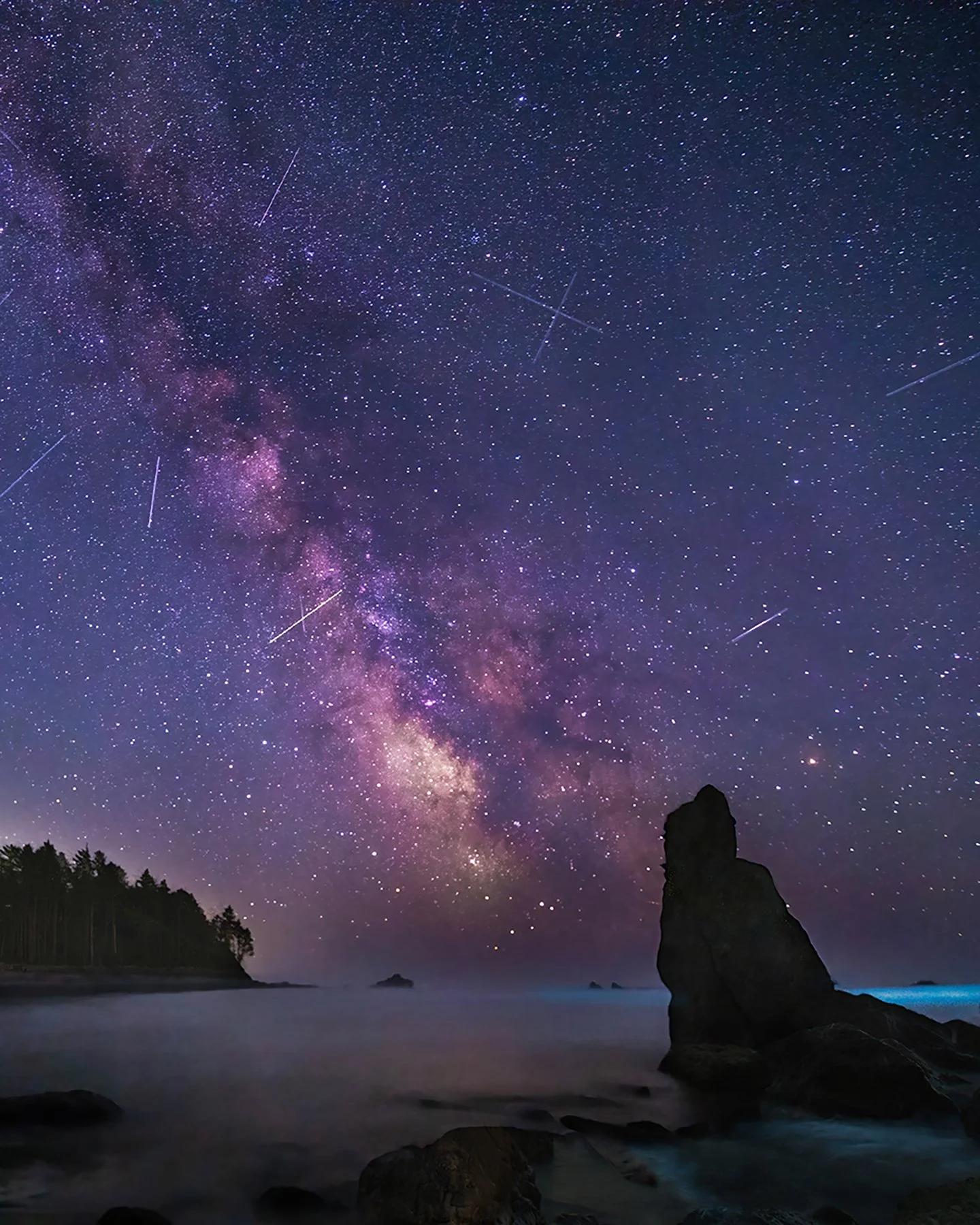Washington Stargazing
One of the things I MUST do each summer is look at the stars. Since we live in Tacoma with lots of light pollution, this also means finding a dark and hopefully picturesque location.
Fortunately, we don’t have to travel too far to find good spots. There are a few national parks and wildernesses nearby with little to no light pollution and provide great options. I also like to have a location that offers a good experience along with great shots of the stars.
One year Scott and I went up to the Sunrise Visitor Center at Mount Rainier National Park to see the stars. I came back with some of my favorite star pics. The mountain is so close and the stars at the right time come right out of the mountain. However, this is a popular place to go and there was a crowd of people. Some were just quietly watching the stars, but there were many who were there to party. It was more noise and people than what I was looking for. We found a quiet place away from the crowd, and I absolutely love the shots I got. But having gotten those shots, there are other places we’d rather go.
One of the easiest times was when we were camping near Greenwater Washington. We just stepped a few feet away from our campsite to look at the night sky and take our pictures. When we were done our bed was only a few feet away.
This year we hope to camp on the beach and take pictures of the stars (and maybe a sunset). Fingers crossed for good weather. We’ll share those pictures when / if we get them.
Do you want to try and see the stars this summer? Here are some helpful things to know.
1. The darker the better. Artificial light washes out the night sky. You can use a dark sky map such as this one https://www.darkskymap.com/nightSkyBrightness or in Washington and Oregon you can head for one of the national parks.
2. Avoid going when there’s a full moon. The light of the moon also washes out the night sky – though not nearly as much as city lights. The smaller the moon the better. It’s best if there is no moon in the sky. Here is a link for lunar phase information. https://www.timeanddate.com/moon/usa/tacoma
3. The Perseids Meteor shower brings lots of shooting stars from mid-July through most of August. The peak is in mid-August. I once had 17 shooting starts in a single 30 second image.
4. Arrive at your location before dark. This is especially true if you are taking photographs. I find it much easier to frame up my shot and set my focus while there is still some light. It can be done after dark but it isn’t fun and can take a lot of time. So, bring a chair and some coffee. Settle in and enjoy the night.
5. Look to the South, Southwest to see the Milky Way. I use an app called ‘Sun Surveyor’ to get a more precise location so I can frame up my shot ahead of time, but generally the milky way will appear SSW and move further West as the night goes on.
6. For taking photos, use your widest angle lens with the aperture wide open, and use a tri pod. Turn your ISO up as far as your camera can handle without creating too much noise. The shutter speed will vary with the size of your lens but could be anywhere from 10 to 30 seconds. If you have a star tracer attached, you can go longer and capture more light. Be patient; it takes a little trial and error to figure out what works best with your camera gear.
7. Have a place to stay or a plan for getting home. Spending the evening under the stars is a lot of fun, but it can end up being a really late night. The last thing you want is to fall asleep at the wheel on the way home, so make a plan for staying somewhere nearby or staying awake.
Happy Stargazing!

